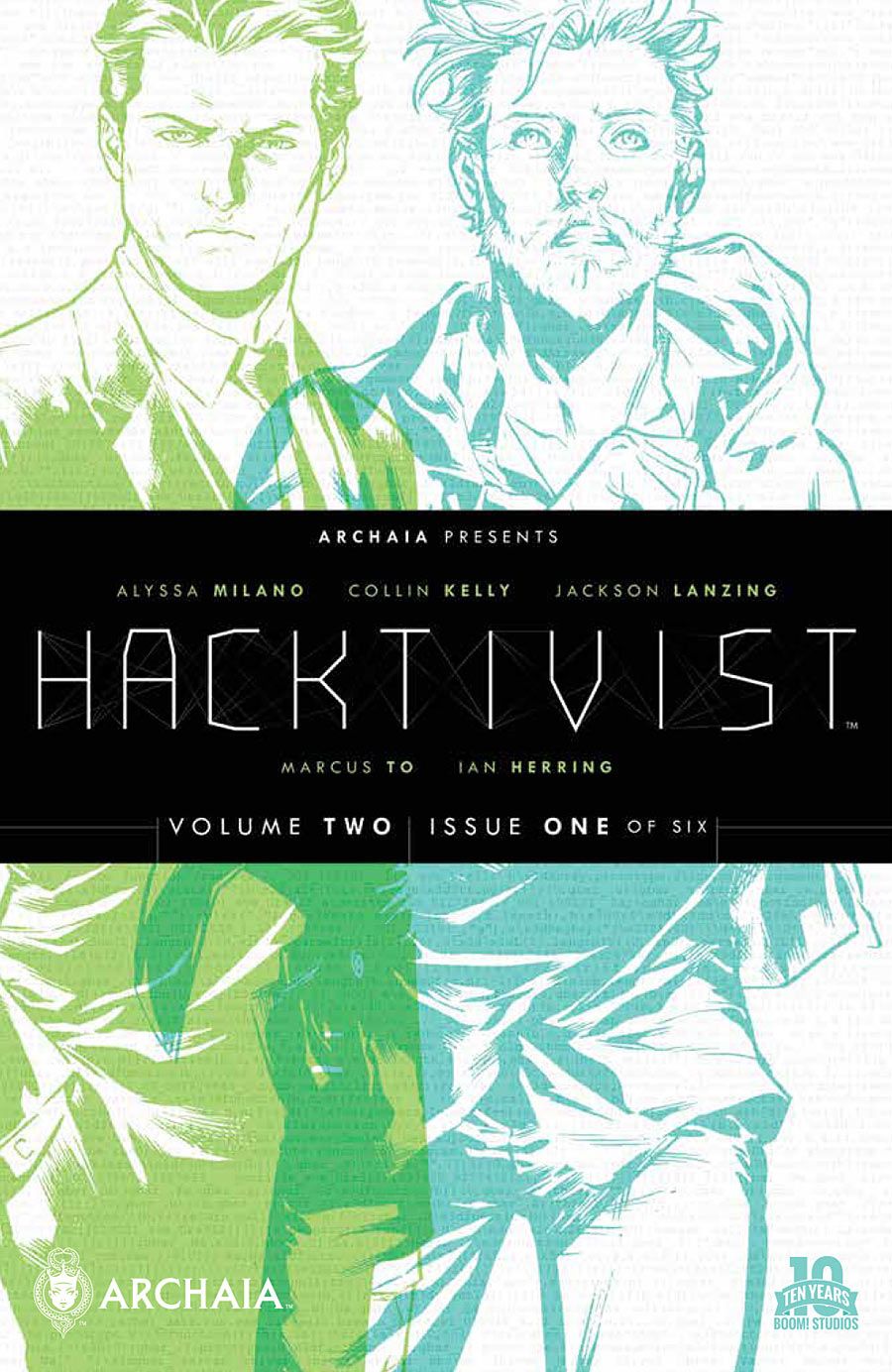"Hacktivist Volume 2" #1 by Collin Kelly, Jackson Lanzing and Marcus To begins six months after the events of the first "Hacktivist" miniseries. The story retains the same main characters, Ed Hiccox and Nate Graft, who don't fit the hero mold so easily anymore. Ed is presumed dead by all but Nate and Reg. By the end of the issue, his ego and his sense of righteousness have been pierced. Nate is now working for the Man, having compromised his principles to escape prison.
The focus and the antagonist have changed. The government and CIA are still bumbling and invested in the status quo, but unexpected new players are introduced. Ed and Nate, estranged from each other, are caught in the middle and haven't found a third way yet. Future issues will probably deal with this lack of a mission quickly. The two will probably become a team again but, for now, the moral anchors of the story are passive.
In the lead-up to the explosive final scene, the creative team shows the unsuspecting victims going about their lives before an attack. While these one percenters, managers and bureaucrats aren't meant to be sympathetic, it's hard not to feel bad for them, as their own homes are nightmarishly hijacked to be used against them.
The moral ambiguity hasn't done the plot any favors yet, since things won't get more exciting until Ed and Nate are acting instead of reacting, but it does add philosophical depth. Ed and Nate's present and past decisions are drawn from real-world, ongoing debates about the ethics of hacking and civil disobedience. Kelly and Lanzing introduce these questions through the plot and avoid openly preaching, but it's pretty easy to guess where things are going and what line the writers are taking.
"Hacktivist V2" #1 devotes more effort to its didacticism and themes than to characterization. Readers are told what Ed and Nate think as they pass through the crucible of crisis (and, indirectly, readers are nudged heavily towards a specific takeaway message). Unfortunately, writers' dedication to a message often means that the rest of the story suffers. There is plenty of action, but the pacing feels too anxious, strained and rushed to delve beyond the surface of the major players and their motives.
Movies like "Hackers" insert a lot of farfetched scene changes to keep coding exciting. Kelly and Lanzing reject unnecessary setting switches and avoid obvious information dumps, but the story still feels too heavy on expository dialogue and text. The dramatic developments are an effort to compensate for the talking heads, but the atmosphere of constant crisis makes the action feel forced.
To's layouts are excellent. He gives hacking a menacing physical presence by laying stripes of red-on-black code along panel borders. While the tense nighttime confrontation in Nate's yard is a melodramatic development, this unhappy reunion still has emotional impact thanks to To's strong body language.
Herring's colors are one-dimensional, overly dominated by one hue from scene to scene. The artwork is flattened by too many cold blues, purples and greens. However, on the plus side, his approach does keep the transitions clear and the action easy to follow.
The cinematic crescendo that leads to the game-changing last page has dramatic impact, even though all its components are derivative. "Hacktivist Volume 2" #1 does a good job presenting a philosophical discourse through fiction, but its characters don't feel fully fleshed out outside their beliefs, so the pathos is limited.

